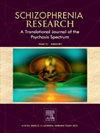Optimisation and development of new tDCS montages to target the cerebellum in schizophrenia: An electrical current modeling study
IF 3.5
2区 医学
Q1 PSYCHIATRY
引用次数: 0
Abstract
Background
Schizophrenia is a severe psychiatric disorder that affects individuals' cognitive, social, and emotional functioning. Negative symptoms, such as reduced motivation and social withdrawal, are refractory to available treatments and often contribute to poor functioning and quality of life. The cerebellum has been implicated in the pathophysiology of schizophrenia and is a potential target for treatment with non-invasive brain stimulation, for example transcranial direct current stimulation (tDCS). Previous studies have used conventional and high-definition (HD) tDCS montages to target the cerebellum, but these methods have limitations in terms of intensity and focality. Therefore, there is a need to test new cerebellar tDCS montages that optimize both the intensity and focality of the induced electric field.
Objective: To test two new tDCS montages (PO10Chin and VermisChin) targeting the right posterior cerebellum and vermis and compare their effectiveness with three commonly used cerebellar tDCS montages.
Methods
Electric field simulations for five tDCS montages were compared using linear mixed-effects models (LMMs) to assess current intensity and focality in clinical and healthy groups.
Results
The PO10Chin montage showed the highest electric current intensity over the right posterior cerebellum, while VermisChin demonstrated high intensity and focality over the vermis. The HD montage exhibited strong intensity but poor focality, with current hotspots mainly in the occipital cortex. Although the healthy control group was associated with higher current intensity, the effect size was small and therefore can be considered negligible, suggesting that the new montages show similar results for both clinical and non-clinical samples.
Conclusion
The PO10Chin and VermisChin montages demonstrated highest intensity for right posterior and vermal cerebellum, respectively, compared with the other montages making them promising approaches for targeting the cerebellum in future in vivo studies. Future research should explore the underlying mechanisms, consider safety measures, and evaluate the clinical efficacy of these new montages.
优化和发展新的tDCS蒙太奇靶向小脑在精神分裂症:电流模型研究
精神分裂症是一种严重的精神疾病,影响个体的认知、社会和情感功能。消极症状,如积极性下降和社交退缩,难以治疗,往往导致功能低下和生活质量下降。小脑与精神分裂症的病理生理有关,是非侵入性脑刺激治疗的潜在靶点,例如经颅直流电刺激(tDCS)。以往的研究使用传统和高清(HD) tDCS蒙太奇来靶向小脑,但这些方法在强度和聚焦方面存在局限性。因此,有必要测试新的小脑tDCS蒙太奇,以优化感应电场的强度和聚焦。目的:对两种新的针对右小脑后部和小脑蚓部的tDCS蒙太奇(PO10Chin和VermisChin)进行测试,并与三种常用的小脑tDCS蒙太奇进行效果比较。方法采用线性混合效应模型(lmm)对5种tDCS蒙太奇的电场模拟进行比较,评估临床组和健康组的电流强度和聚焦。结果PO10Chin蒙太奇在右侧小脑后区显示最高的电流强度,而VermisChin在蚓部显示高强度和聚焦。高清蒙太奇画面强度大,但聚焦性差,当前热点主要集中在枕叶皮层。虽然健康对照组与较高的电流强度相关,但效应大小很小,因此可以忽略不计,这表明新的蒙太奇对临床和非临床样本都显示出相似的结果。结论与其他蒙太奇相比,PO10Chin和VermisChin蒙太奇分别对右后脑和小脑皮层的作用强度最高,是未来小脑靶向研究的理想方法。未来的研究应探索其潜在的机制,考虑安全措施,并评估这些新的蒙太奇的临床疗效。
本文章由计算机程序翻译,如有差异,请以英文原文为准。
求助全文
约1分钟内获得全文
求助全文
来源期刊

Schizophrenia Research
医学-精神病学
CiteScore
7.50
自引率
8.90%
发文量
429
审稿时长
10.2 weeks
期刊介绍:
As official journal of the Schizophrenia International Research Society (SIRS) Schizophrenia Research is THE journal of choice for international researchers and clinicians to share their work with the global schizophrenia research community. More than 6000 institutes have online or print (or both) access to this journal - the largest specialist journal in the field, with the largest readership!
Schizophrenia Research''s time to first decision is as fast as 6 weeks and its publishing speed is as fast as 4 weeks until online publication (corrected proof/Article in Press) after acceptance and 14 weeks from acceptance until publication in a printed issue.
The journal publishes novel papers that really contribute to understanding the biology and treatment of schizophrenic disorders; Schizophrenia Research brings together biological, clinical and psychological research in order to stimulate the synthesis of findings from all disciplines involved in improving patient outcomes in schizophrenia.
 求助内容:
求助内容: 应助结果提醒方式:
应助结果提醒方式:


